

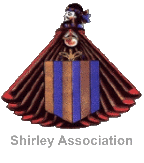 |
 John Martin Shurly John Martin ShurlyEngland to Buffalo NY |
||
| < Back to the USA Lineage Index Page | |||
|
This Lineage Last Updated
October 2021
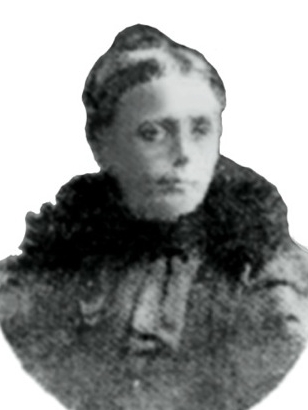 source: Robert Vanderzee
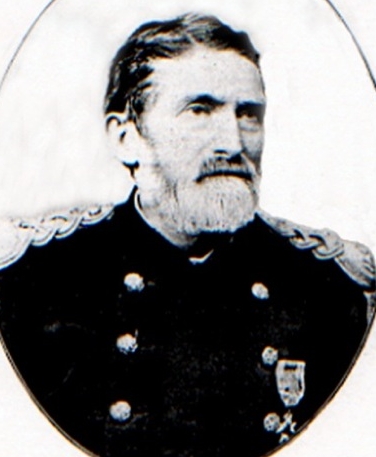
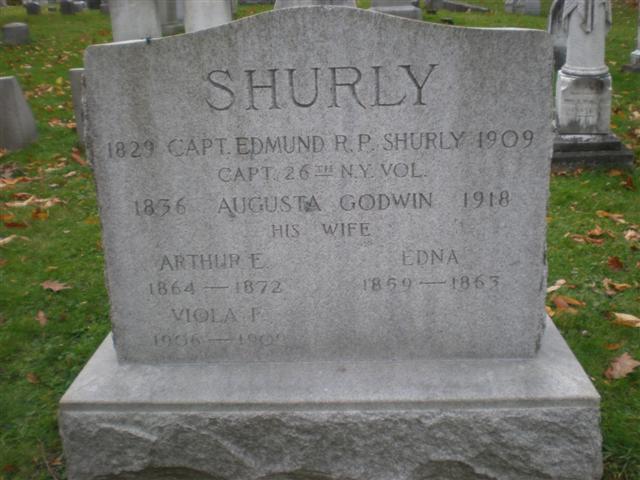
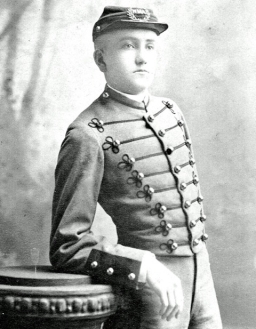
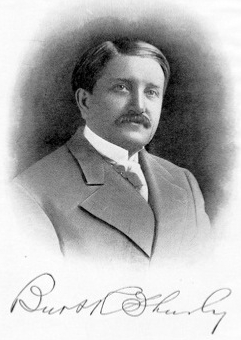
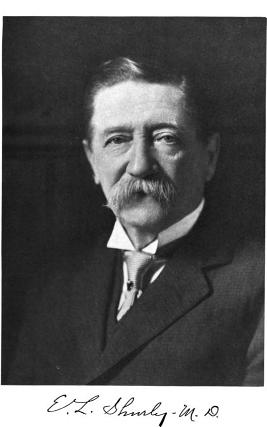
ERNEST LORENZO SHURLY. Doctor Ernest Lorenzo Shurly, of Detroit, physician, specialist, teacher, clinician, and public-spirited citizen, died of heart disease May 10, 1913, aged 67. Dr. Shurly had become eminent in the medical profession not only of the middle west but of the nation as well. He was graduated from the medical department of the University of Buffalo in 1866, and had been engaged in private and Army practice before locating in Detroit, having been acting assistant surgeon in the United States Army, with service in Indian campaigns and in the Yellowstone Expedition. The doctor was a pioneer in the fight against tuberculosis, and through his instrumentality the first tuberculosis camp in Michigan was founded at Eloise, in Wayne County, He supervised research work on the lower animals for the purpose of studying tuberculosis, and published valuable contributions to scientif1c medicine on the results thereof. For years he had been connected with the teaching force of the Detroit College of Medicine, imparting instruction in diseases of the nose, throat, and chest. He was the founder of the department of laryngology in this institution, and an active lecturer and clinician until a few years• ago, when he retired with the title of Emeritus Professor of this branch of medicine. For a number of years he was chief of staff of Harper, and member of the staff of Saint Mary's, Saint Luke's, and the Women's Hospital. He devoted considerable time to the problem of hospital management, and his executive ability was exemplified in marked degree as chief of staff at Harper. Dr. Shurlv's contributions to medical literature were various and valuable. He was not only a prolific writer for the medical periodic press during his stringent life, but standard text-books bearing his authorship were likewise dedicated to medical science. Although in recent years the doctor was not as eager to increase his practice as he was earlier in his medical career, he nevertheless maintained vital interest as an expert in his chosen speciality to the end, and realized the fulfilment of his often expressed desire that he might " die in the harness." Transactions of the American Climatological Association for the year 1913, Volume 29, American Climatological Association, 1913
Obituary: ERNEST LORENZO SHURLY, M.D. Ernest Lorenzo Shurly, M.D., was born in the city of Buffalo, New York, June 11, 1845. His early education was gained at Waukesha, Wis.; Rochester, N. Y., and Buffalo. Having at an early age determined to become a physician he matriculated at the Medical Department of the University of Buffalo and received the degree of M.D. from that institution in 1866. Following a regular term as interne at the Buffalo General Hospital he entered the Medical Corps of the United States Army with service in the Indian campaign of the late 60's, in the course of which he gave evidence of unusual professional ability, and on several occasions distinguished himself for personal bravery. His military experience terminated with the Yellowstone expedition of 1870. Returning East he practiced general medicine for two years at Manistee. In 1872 he moved to Detroit, Michigan, which city became his permanent home. He soon associated himself with the Detroit College of Medicine, in which institution in 1873 he became instructor in Minor Surgery, and following that lectured on the Practice of Medicine and on Materia Medica. Later he occupied at various times the Professorships of Materia Medica, Clinical Medicine and Laryngology, which later he himself established. He was also Vice-President of the Faculty. [more about his medical career...] Transactions of the annual meeting of the American Laryngological Association, Volume 36 American Laryngological Association, 1914 Ernest Lorenzo Shurly. M. D. After more than forty years spent in active practice in the city of Detroit. Ernest L. Shurly. M. D.. professor of laryngology and clinical medicine at the Detroit College of Medicine, holds a prominent place among the eminent medical men of this city, and has been called upon to fill various positions of trust and honor necessitating the deepest and most intimate knowledge of his profession. Dr. Shurly is a native of Buffalo. New York, born there on June 11, 1846, and is the son of John M. and Elizabeth C. (Chumley) Shurly. of English birth. The early schooling of Dr. Shurly was secured in the Buffalo public schools, and he later was graduated from Carroll College in Wisconsin, after which he entered the medical department of the University of Buffalo, having as a youth decided upon medicine as his life work, and he was graduated from that institution with his class in 1865. receiving his degree of M. D. He at once entered the Buffalo General Hospital as an interne, and after a period of twenty months spent in that capacity he removed to Manistee. Michigan, and engaged in general practice. He remained in that city for three years, meeting" with a large measure of success. He was then appointed assistant surgeon in the United States army and assigned to the Whistler Expedition, which went to the Yellowstone Park, and also traveled with them through the west before the country was surveyed. In 1871 Dr. Shurly located in Detroit, and this city has since that time been the scene of his labors. In 1874 Dr. Shurly was appointed instructor in minor surgery in the Detroit College of Medicine, and in 1878 he was made lecturer of laryngology and physical diagnosis in that institution, two years later being appointed to his present position of professor of laryngology and clinical medicine. He was a member of the staff of St. Luke's Hospital for many years, and for a period of fifteen years served as visiting physician to St. Mary's Hospital, and later, from 1888 to 1898, was chief of staff of the Harper Hospital. He is still a member of the staff of that hospital, as well as of St. Mary's, St. Luke's and Women's Hospitals, and he is vice,president of the Detroit College of Medicine. The Doctor was one of the first to take an interest in the treatment of tuberculosis and has done a great deal of work along these lines. Dr. Shurly is a member of the Detroit Academy of Medicine, of the Wayne County Medical Society, of the Michigan State Medical Society (of which he has been president), the American Medical Association (in 1890 he was elected to deliver the address before this Association, which is the highest honor in the gift of the profession), the American Climatological Association, the American Laryngological Association, the French Tuberculosis Congress, the American Congress of Physicians and Surgeons, and other important medical bodies. He is also a member of the American Forestry Association. Dr. Shurly has always been an earnest believer in frequent communication among the members of any craft, as to comparison of views, relation of experiences and interchange of thought, and therefore has been prominent in all movements calculated to he of service in the organisation of the medical fraternity, both local and general. Devoted to the noble and humane work for which his profession stands, he has ever been faithful and indefatigable in his endeavors, and has earned not alone the due reward of his efforts in a material way, but has also proved himself eminently worthy to exercise the important functions of his calling by his ability, his abiding sympathy and his earnest zeal in behalf of his fellow men. His understanding of the science of medicine is broad and comprehensive, and the profession and public accord him a distinguished place among the practitioners of .his adopted city. Of his long and faithful service as an instructor, the record is written in the grateful memories of those who have been his pupils. His knowledge in the special lines in which he has been engaged is deep, and the leading medical journals throughout the country have published many of his learned articles, the Doctor being a constant and prolific contributor. He has been n good and public,spirited citizen, but has never eared to enter public life, preferring to give his energies to the advancement of the profession which is already so deeply indebted to him for his faithful services. On April 13, 1868. Dr. Shurly was united in marriage with Miss Elizabeth Pultz. of Rhinebeck, New York, a daughter of Manson and Maria (Rowe) Pultz. - History of Detroit: a chronicle of its progress, its industries, its institutions, and the people of the fair city of the Straits, Volume 2, by Paul Leake, The Lewis Publishing Company, 1912 Dr. Burt Shurly - Born July 4, 1871, in Chicago, practiced medicine for 50 years, and died in Detroit in October 1950. Graduated Detroit College of Medicine in 1895 and did post doc work at the University of Vienna. He served in the Spanish-American War and during WWI organized and commanded Base Hospital 36 in France and also was stationed in Vittel, France. Decorated by the French goverment, he also received the Purple Heart and Legion of Honor. He had been a ENT (ear, nose, throat) professor and at one time dean of the Detroit School of Medicine. Among other activities, he supported a resolution to establish a section on diseases of the chest for the AMA. He was also a fellow of the College of American Chest Physicians. After WWI, he established the Shurly Hospital, which he maintained until 1949. He was president of the Detroit TB Sanitarium. - Obit written for the 17th Annual Meeting of the American College of Chest Physicians held in Atlantic City, New Jersey, in June 1951: History of Chicago, Volume 3 The Shurly Manufacturing Company, makers of all kinds of jewelry, was organized and incorporated under the State laws in 1882, and is one of the leading establishments in Chicago. The business is controlled and conducted by Edmund R. P. Shurly, president, and Edwin A. Giles, secretary and treasurer. Both of these gentlemen are well and favorably known to the trade, and it is to their reputation and judgment that the company owes its success. Edmund R. P. Shurly, president of the Shurly Manufacturing Company, was born in Cambridge, England, on January 27, 1829. When he was eight years old. his parents came to this country, and after a year's stay in New York City, moved to Albany, and then went to New Philadelphia, Ohio, where they remained one year, afterward settling in Buffalo, N. Y. He attended school for a few years, when he entered the employ of H. O. Hood, jeweler of that city, with whom he staid one year. Upon returning from St. Catherine's, Canada, where he made a short stay, he engaged with C. H. Goodrich, and remained with him seven years. In 1851 he started in the jewelry business with P. C. Staubaugh, having purchased the store of his late employer. Two years later he secured his partner's interest and continued the business with his brother, C. J. Shurly, until 1861. He enlisted in the 21st New York Infantry Volunteers at the first call for troops to suppress the Rebellion, and was shortly thereafter commissioned captain in the 26th New York Infantry Volunteers, in which he served two years, participating in the engagements of Bull Run. Slaughter Mountain, Thoroughfare Gap, second Bull Run, Antietam, Fredericksburg, and others. In the last-named battle he was severely wounded. He became captain in the Veteran Reserve Corps, and was then transferred to the 18th United Stales Infantry Volunteers. In 1864, he was stationed at Camp Douglas, and all of the papers, documents and other matter concerning the conspiracy to liberate the Confederate prisoners passed through his hands and he was instrumental in frustrating the design. He was the last commanding officer at that point. Sir. Shurly was honorably discharged at the close of the War, but enlisted again to serve in subduing the hostility of the Sioux Indians. In 1868, he was placed on the retired list, having seen nearly seven years of active military service. He returned to Chicago in 1869, and resumed business at No. 6 1/2 Clark Street. After the fire of 1871, he opened a jewelry store in the Sherman House, upon its being rebuilt, where he remained nearly six years. In 1882, he sold out his interest to A. M. Church, and organized the Shurly Manufacturing Company, of which he is now president. Mr. Shurly was married, on November 25, 1856, to Miss V. A. Goodwin, of Rochester, N. Y., and has one son,—Burt R.
Circle the wagons!: attacks on wagon trains in history
and Hollywood films In Wyoming, two years after the destruction of Sergeant Custard [Sic] and his wagons, Lt. Edmund R.P. Shurly, 27th Infantry, barely escaped the same fate. on 28 October, 1867, Lieutenant Shurly with 40 27th Infantrymen, left Fort C.F. Smith with 25 empty wagons heading south to Fort Phil Kearny. Shurly reached a point six miles north of Phil Kearny when he met up with a Wells Fargo supply train escorted by Lt Florence McCarthy, 27th Infantry. The two lieutenants agreet to "swap" trains with McCarthy taking the empty wagons south and Shurly taking the Wells Fargo train on to Fort Smith. On 3 November, Shurly had his men store their knapsacks on the lead wagon of the 16 wagon train, which contained the ammunition stores. They headed north, but a snowstorm blew in and little progress was made. The next morning Shurly got the train moving to a point east of present day Sheridan, and then crossed over a divide to descend into the valley of Goose Creek. About 11 am the train was trung out with the lead wagons in the valley, the middle section negotiating a slippery hill and the read nearly out of sight a half mile from the hill. the ammunition was in front, the howitzers were in the rear adn the Wells Fargo teamsters were in the middle with rifles but no ammunition. From this position on the hill, Shurly saw Indians approaching but there was little he could do. About 300 Lakotas and Cheyennes attacked the front and rear simultaneously. The frightened mules bolted and the first wagon ran into the arms of warriors who leapt aboard and drove it out of sight. While the other forward wagons corralled in the valley, the howitzer fired from the rear, and Shurly made his way toward the firing. He and seven men were cut off from the rest, but Cpl Peter Donnelly, Co H, worked the howitzer fast enough to keep the Indians at bay. Finally in order to save the gun, Shurly had it limbered up and drove it disregarding all hazards towrd the corral. On the way, the lieutenant took an arrow through his foot but turned with revolver in hand and shot the Indian who just shot him. Pvt. Harold Partenheimer, Co D was killed when two arrows pierced his lungs and Cpl Donnelly and Pvt James McGeever were badly wounded. Cpl Gordon Fitzgerald, Pvt Michael kerr and civilian Wm Freeland were less seriously injured. They finally reached the corral, but it was hastily set up in a narrow depression withiin rifle range of surrounding hills and thickets near the creek. With the ammunition wagon gone, Shurly made a quick count and found that they only had six shots for the howitzer and 40 rounds each for the remaining soldiers. The Indians, meanwhile had goine to three wagons abandoned on the hill and ransacked their contents carrying off or destroying some of the 700 sacks of corn and making off with stores of red blankets. They were apparently satisfied enough with their plunder for the firing became desultory and ended with the onset of darkness. Two men volunteeered to ride to Fort Phil Kearny reaching there at midnight with the news. At 1am Capt John Green led two companies of 2nd Cavalry out of the fort filming the besieged train at daylight. The trapped men groaned when they saw that appeared to bemore Indians coming over the hill, but the groans turned to cheers when they recognized the horesemen as US Cavalry. While the wagons went on to Fort Smith the dead and wounded were taken back to Phil Kearny. Shurly was incapacitated for almost eight months; Fitzgerald's hand was amputated; and Donnelly and McGeever later died of their wounds. They were buried in the post cemetery, along with Private Partenheimer. It was thougth that about ten warriors were killed or wounded. Findagrave.com Edmund Richard Pitman Shurly burial Mount Hope Cemetery Birth: Jan. 27, 1829 Capt. E. R. P. Shurly, as he was known, was the son of jeweler John Martin Shurly and Elizabeth Catherine Chumley. Shurly grew up in Buffalo, New York, where he became a jeweler. He married Charlotte Augusta Godwin on 25 Nov 1856 at Trinity Church, Rochester. Shurly joined the 26th New York Volunteers with his friends, Gilbert S. Jennings and Charles Jennings, in April of 1861. He saw combat in a number of battles until he was wounded seriously at Fredericksburg. He returned home to recover, and then joined the Veterans Reserve Corps (aka the Invalid Corps), which first posted him at a prisoner of war camp, Camp Douglas, in Chicago. He was involved in the quelling of the prisoner insurrection at Camp Douglas in 1864. After the end of the Civil War, he rejoined the regular army, and was sent to Nebraska to join the 18th U.S. Infantry Regiment as a 2nd lieutenant under Gen. Henry Carrington. The regiment built up forts and guarded wagon trains along the dangerous Bozeman Trail, through Wyoming and Montana. Shurly engaged in numerous battles with the Sioux, Cheyenne, and Arapahoe while posted at Ft. Smith, near Billings, Montana, and other western outposts. He served in the west from roughly 1867 to 1869. Shurly left the army in 1869 with a permanent limp from an arrow-wound in his foot, and with his family, settled in Chicago, where he returned to the jeweler's craft and opened a business on Clark Street. He and Augusta lost everything in the Great Chicago Fire of 1871. He rebuilt and expanded his jewelry business into the successful Shurly Manufacturing Company, and became a leader in the Episcopal Church. He wrote a number of letters and sketches about his experiences and his views of the Sioux that were published in local newspapers and magazines. He retired from his business about 1898, and he and his wife moved to Detroit to be near their son, Dr. Burt Russell Shurly. He died from a heart attack in Detroit at the age of 80 years and 24 days. Augusta and E. R. P. Shurly had three children: Edna (1859-1863), Arthur (1864-1872), and Burt (1871-1950). Edna and Arthur, who died of diptheria in childhood, are buried near their parents. For more about Shurly's life, see the book _Encounters with
History: The Memoirs, Reminiscences, and Amazing Life of Captain
Edmund Richard Pitman Shurly_, by descendant Robert Vanderzee. Dr Burt Russell Shurly Birth: Jul. 4, 1871 Burial: Dr. Burt Russell Shurly was the son of English immigrant Edmund Richard Pitman Shurly and Augusta Charlotte Godwin. Born in Chicago just before the Great Fire, he attended Northwest Military Academy, then took a degree from the University of Wisconsin in 1893. He received his medical degree in 1895 from the Detroit College of Medicine, then studied at the University of Vienna for a year. Dr. Shurly became dean of the Detroit School of Medicine, where he presided over the reorganization of its curriculum and methods; under his leadershi[p, the school became the Medical College of Wayne University. Shurly specialized in diseases of the nose and throat, and had a particular interest in tuberculosis, to whose cure and understanding he devoted much time. During the Spanish American War, Dr. Shurly served as surgeon on the ship Yosemite. During World War I, he set up and commanded a base hospital in Vittel, France. He and his wife, Viola Palms Shurly, had two sons and three daughters: Burt Shurly, Jr.; Edmund R. Shurly; Mary Shurly Vanderzee; Mrs. Beatrice Wilcox; and Mrs. Clarkson Wormer III. Marian Winifred Shurly Jennings Birth: Mar. 20, 1827 Burial: Wife of Captain Gilbert S. Jennings. She was cremated in Detroit MI and her ashes returned to New York to be buried in their family plot on October 31 1892. Encounter with History: The Memoirs, Reminiscences, and Amazing Life of Captain Edmund Richard Pitman Shurly, 1829-1909 by Vanderzee, Robert Biography
|
|||
|
All Rights Reserved |
|||